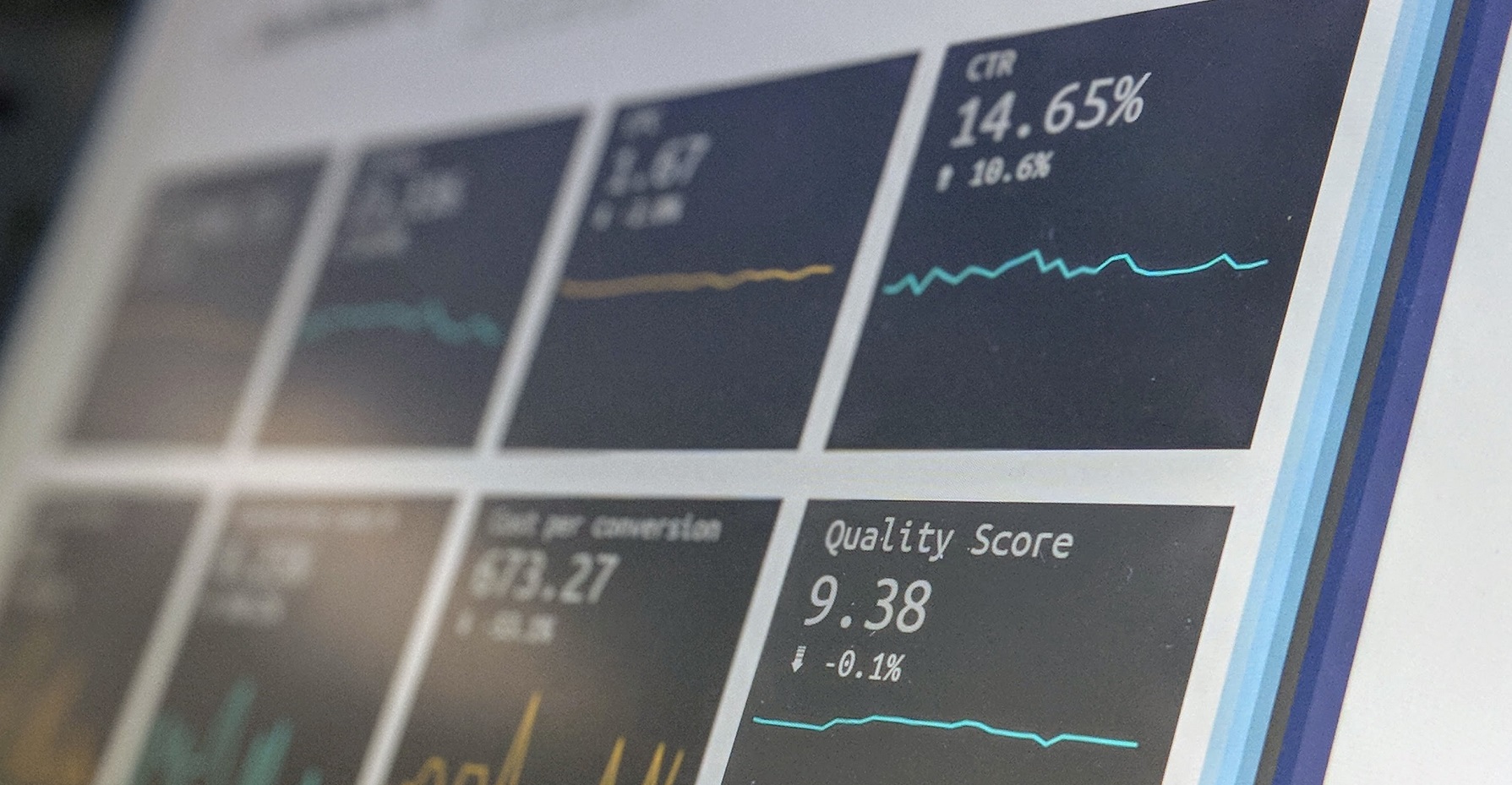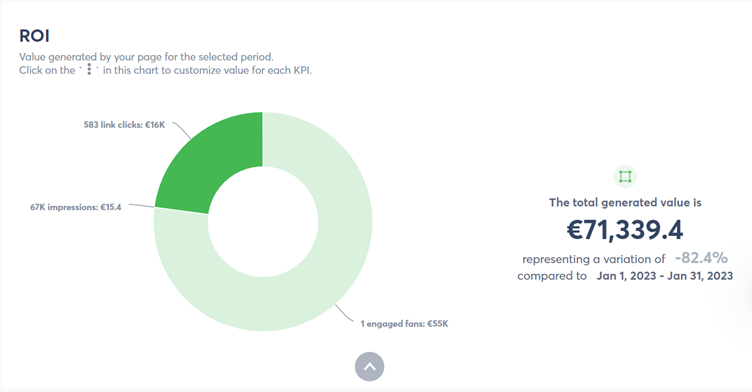To be successful on social media, businesses must set clear key performance indicators (KPIs) that align with their business objectives. These KPIs help businesses track their progress, measure success, and make data-driven decisions. As a strategic marketing agency, we get the importance of social media KPIs. Let’s review your social media KPIs to ensure they are driving business growth.
Step 1: Revisit Your Business Objectives
The first step in reviewing your social media KPIs is to revisit your business objectives. Are they still relevant? Have they changed?
If you don’t have well-defined business objectives, it’s time to create them. Business objectives should be Specific, Measurable, Attainable, Relevant, and Time-bound (SMART). For example, a SMART business objective could be to increase website traffic by 30% in the next six months.
Next, it’s time to evaluate your current KPIs (if you actually had any in place that is). Are they still relevant? Are they helping you measure your progress towards your business objectives? If not, it’s time to revise them. A common mistake that businesses make is continuing to measure KPIs that are no longer relevant. This can lead to wasted resources, ineffective strategies, and inaccurate data. You can measure hundreds of different metrics on social media, but that being said, there are four main areas your social media KPIs should focus on:
Reach
Your Reach tells you how far your message travels, how many people are seeing it, and who those people are. You can measure your social media reach by tracking fans & followers and web traffic. You can also track impressions although most marketers are not keen on this metric. The problem with impressions is that they don’t really mean that someone has actually looked at your post or even noticed it. Perhaps they scrolled over it.
Engagement
Engagement measures the amount of likes, shares, tags and comments that your channel receives. It measures the “social” in social media. Some of the subcategories you can measure include link clicks, post likes, comments, shares and brand mentions. If you are tracking brand mentions then you need to be using social media monitoring software like Agorapulse. Or choose an agency that is. That’s us by the way.

Leads
To ensure you are getting the best social media ROI, you will need to monitor leads. Different brands have different definitions of the word “lead”. For some it’s completing a contact form with a view to purchase a product. For others it might be an eBook download or newsletter signup. It’s important to track your UTMs, especially for non organic social media content.
Conversions
Again, different companies will view conversions in different ways. And in Google Analytics, a conversion can be set up to mean different things too. For example any of these actions from a social media source, could be considered a conversion:
-
- Fills out a registration or call back form
- Downloads an eBook
- Makes a purchase
- Downloads an app or game
Your KPIs should be measurable and achievable. Without the internal or outsourced resources and tools it can be difficult to do either.

Step 2: Align KPIs With Your Social Media Platforms
Once you’ve identified your business objectives and revised your KPIs, it’s time to determine the platforms and content strategy that will help you to achieve them.
Here are some examples of social media KPIs in action:
Facebook: Facebook is a popular platform for businesses looking to increase brand awareness, generate leads, and drive website traffic. Key metrics for Facebook could include post engagement, click-through rates, and conversion rates.
Instagram: Instagram is a visual platform that is popular with younger audiences. It’s a great platform for businesses looking to increase engagement, build brand awareness, and drive website traffic. Key metrics for Instagram could be ROI on shopping sales or Reel views.
Twitter: Twitter is a fast-paced platform that is popular in the finance space. It’s a great platform for businesses looking to increase brand awareness, engage with their audience, and drive website traffic. For Twitter, your metrics could include retweets, follower growth and comments.
LinkedIn: LinkedIn is a professional networking platform that is popular with B2B companies. It’s a great platform for businesses looking to generate leads, increase brand awareness, and build relationships with other professionals in their industry. Key metrics for LinkedIn could be recruitment based leads or IB/ affiliate signups.
Snapchat: Snapchat is a visual messaging app that is popular with younger audiences. Key metrics for Snapchat typically include snap views, story completion rates, and filter usage.
TikTok: TikTok is a short-form video platform that is popular with Gen Z and millennials. For TikTok, your key metrics could be video views, engagement rates, follower growth, and hashtag usage.
It’s important to ensure that your KPIs align with the metrics on each platform. For example, if your key metric for Instagram is Reel views, your KPI could be to increase your engagement rate by 10% in the next six months.

Step 3: Devise a plan to achieve those KPIs
Setting social media KPIs is one thing, but actually hitting those targets requires a strategic approach. Here are some best practices for hitting your social media KPIs:
- Plan and schedule content: Planning and scheduling your social media content in advance can help ensure that you consistently post engaging and relevant content that aligns with your KPIs. Use a social media content calendar to plan out your content, and use a scheduling tool to schedule your posts in advance.
- Monitor your metrics regularly: Tracking your KPIs is crucial to hitting your targets. Regularly monitor your metrics and adjust your strategy as needed. Use social media analytics tools to get insights into your performance and identify areas for improvement.
- Optimise your content: To increase engagement and reach on social media, optimise your content for each platform. Use high-quality images and videos, engaging captions, and use relevant hashtags to increase discoverability. For example, on Instagram, incorporating Instagram Stories can improve your chances of reaching your KPIs.
- Engage with your audience: Building relationships with your followers is key to driving engagement on social media. Respond to comments, ask questions, and encourage user-generated content to increase engagement rates. This can help build brand loyalty and ultimately drive growth.
- Experiment and test: Social media platforms are constantly evolving, and what worked yesterday may not work today. Therefore, it’s important to experiment with new types of content, new social media platforms, and new targeting strategies to achieve your KPIs. Test different types of content, hashtags, and posting times to see what resonates with your audience.
Achieving your social media KPIs is not a one-time event, but rather an ongoing process of continuous optimisation and improvement. Regularly reviewing and refining your social media strategy is key to driving long-term growth on social media. Talk to Contentworks Agency about your social media management and social media KPIs.
Step 4 : Track your progress and adjust your strategy
Now that you’ve revisited your business objectives, evaluated your current KPIs, determined your key metrics, and aligned your KPIs, it’s time to track your progress and adjust your strategy as needed. Regularly monitoring and reporting on your KPIs will help you understand what’s working and make data-driven decisions that will drive business growth.
When tracking your progress, it’s important to look at both quantitative and qualitative data. Quantitative data includes metrics like reach, impressions, and click-through rates, while qualitative data includes things like audience feedback, sentiment analysis, and social listening. Combining both types of data will give you a more complete picture of your social media performance.
Here are some best practices for measuring social media KPIs:
- Use analytics tools: Most social media platforms provide built-in analytics tools that allow you to track your performance against key metrics. Facebook, Instagram, and Snapchat have Insights and Twitter, LinkedIn, and TikTok have Analytics. These tools provide valuable information on your audience demographics, engagement rates, and post performance. By regularly reviewing these analytics, you can identify areas for improvement and optimise your social media strategy. If you’re a busy company then you might want to utilise professional social media management tools or a social media marketing agency.
- Set up tracking links: One way to track traffic and conversions from social media platforms is by setting up tracking links. By using UTM parameters in your links, you can track the traffic and conversions that come from each social media platform. This allows you to measure the ROI of your social media efforts and adjust your strategy accordingly.
- Use social media listening tools: Social media listening tools allow you to monitor brand mentions and conversations across social media platforms. By using these tools, you can track sentiment, identify trends, and respond to customer feedback. This can help you improve your brand’s reputation, engage with your audience, and identify opportunities for growth.
- Analyse competitor performance: It’s important to watch your competitors’ social media performance. By monitoring their performance, you can identify possible areas for improvement and adjust your strategy to stay competitive. Use social media analytics tools to track their engagement rates, follower growth, and post performance.
- Regularly review and adjust your strategy: Social media is a constantly evolving landscape, and it’s important to regularly review your performance and adjust your strategy accordingly. By monitoring your KPIs and analysing your social media analytics, you can identify areas for improvement and adjust your strategy to optimise your performance. Set up regular review periods to evaluate your progress, measure the effectiveness of your efforts, and adjust your strategy for better results.
Contentworks Agency clients get killer social media reports sent to their inbox each month. These clearly benchmark performance against social media KPIs.

Our reports also show you your best and worst performing content, demographics, mentions, audience growth, ROI and so much more!

If you find that your KPIs are not driving the desired results, it’s time to adjust your social media strategy. This could mean trying new types of content, targeting a different audience, or experimenting with new platforms. It’s important to be flexible and open to change as you strive to achieve your business objectives.
Setting effective social media KPIs is essential for driving business growth. Contentworks Agency works strategically with social media clients reporting on KPIs and updating on targets, content planning and activities. Our detailed monthly reports and update calls keep clients in the loop too. Talk to our team to get started on some actionable and meaningful social media KPIs.
